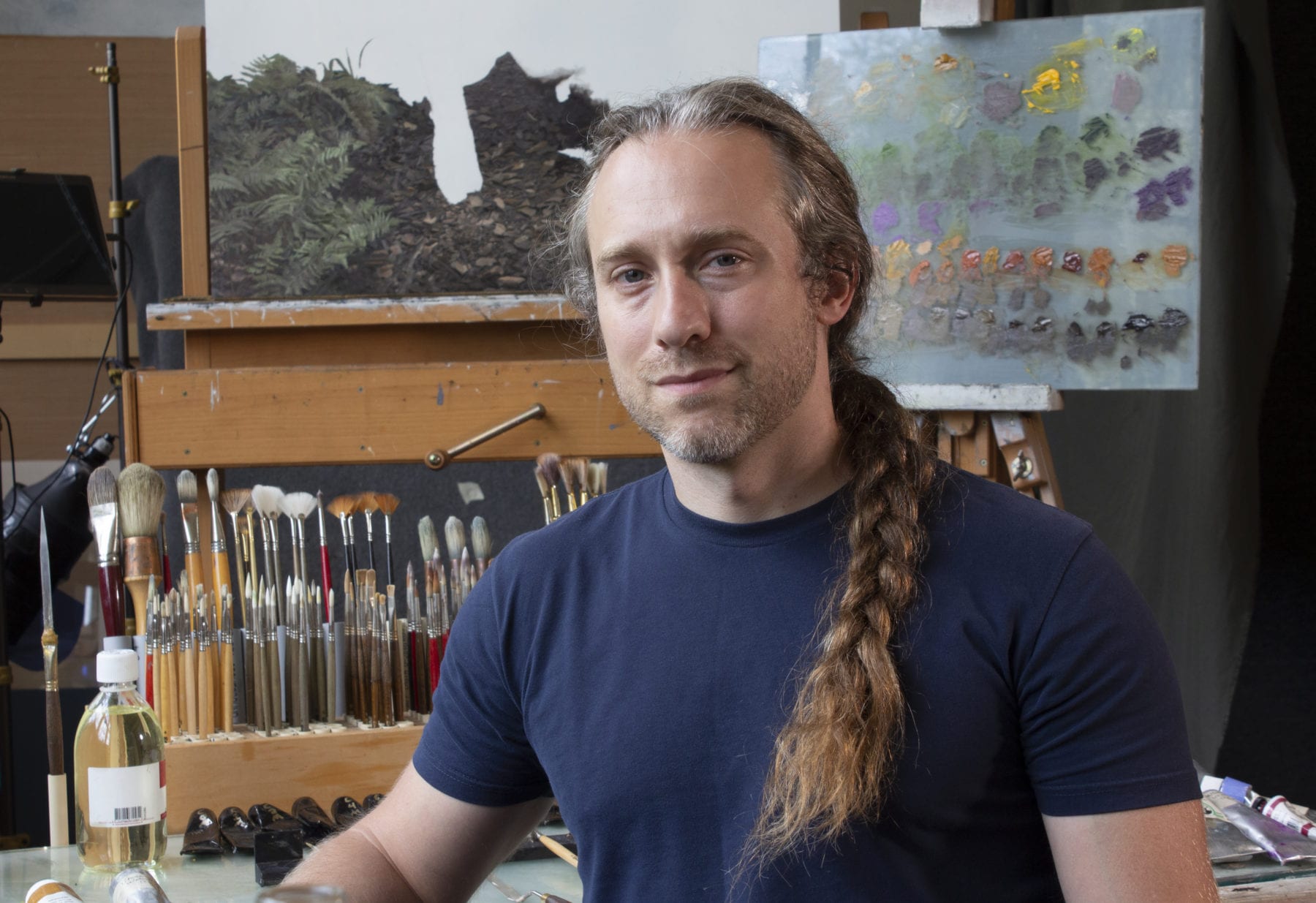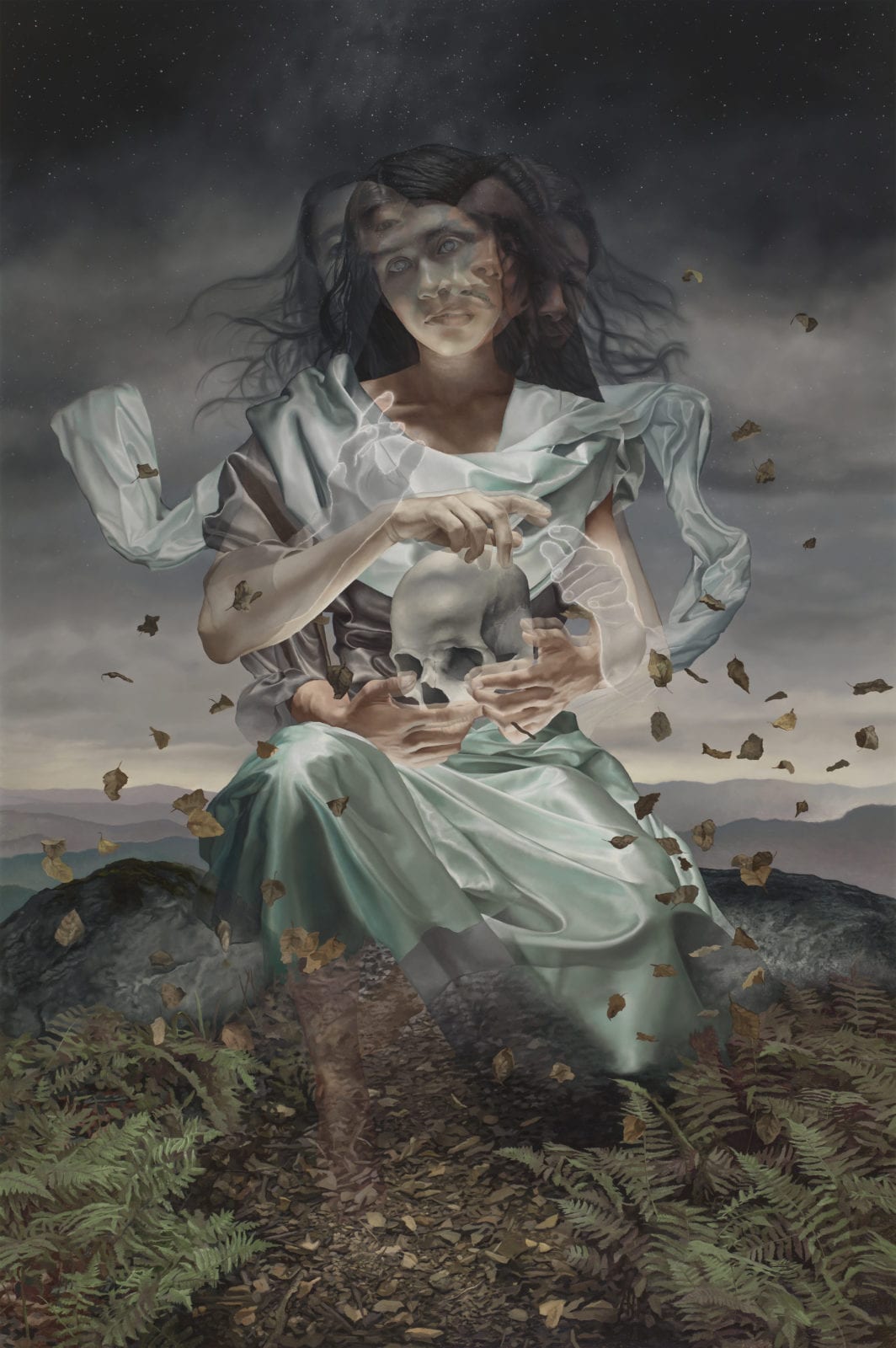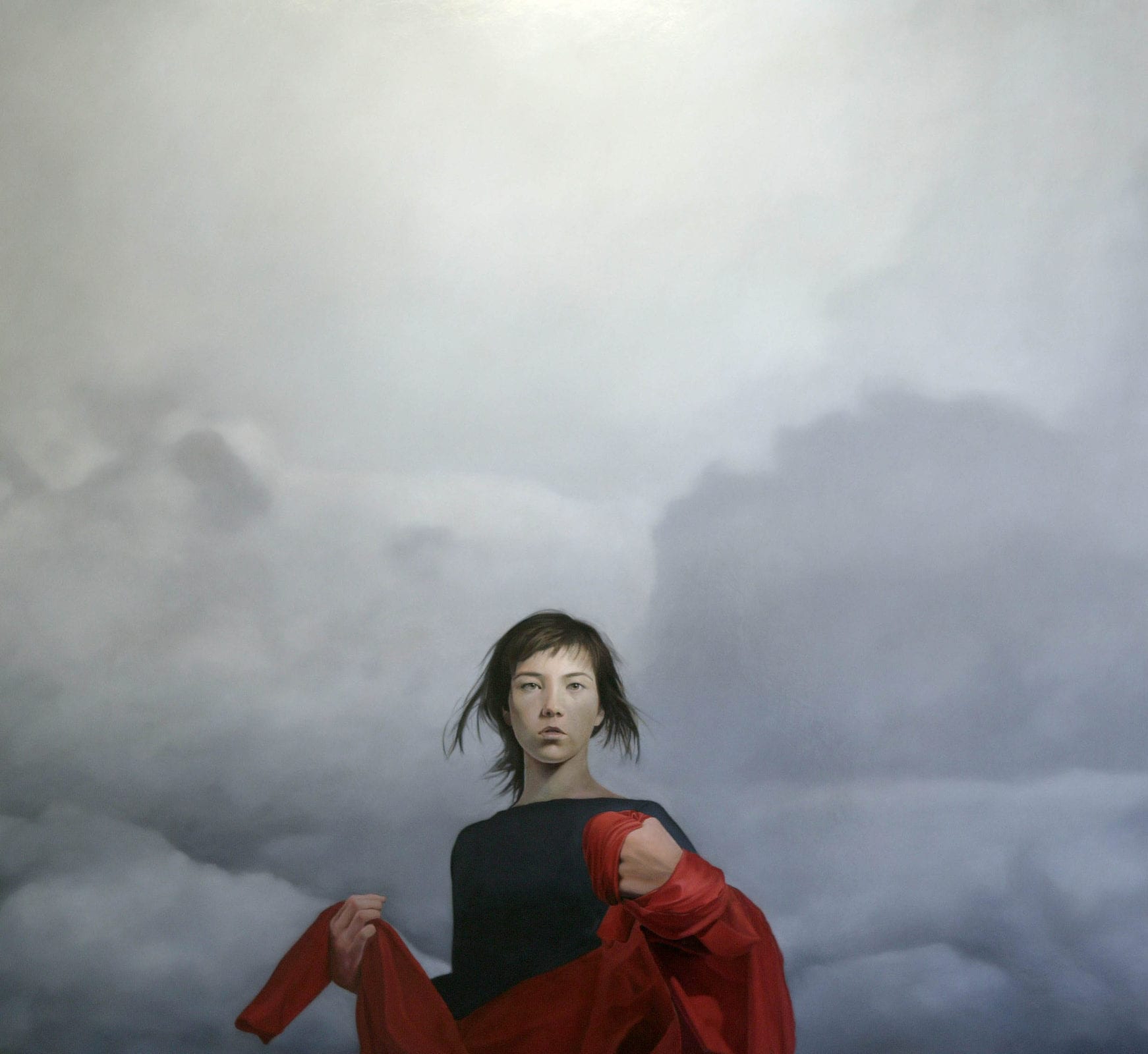Artist reflects on how his Fulbright experience has influenced his art

Francesco Lombardo completed training in art from the Maryland Institute College of Art in Baltimore, receiving his B.A. in painting in 2002. Shortly thereafter he studied with the painter Odd Nerdrum in Norway for half a year. In 2004 he found long-lasting influence in the otherworldly allure of Iceland after being awarded a Fulbright scholarship to study there for one year.
Lombardo primarily uses oil paint and has specialised in painting the human figure. Francesco blends past (mostly Baroque) and contemporary artistic influences in paintings.
Lombardo’s works have gained much attention and his paintings have been on display at the Smithsonian National Portrait Gallery in Washington, D.C. as part of the 2010 Outwin Boochever Portrait Competition. Francesco’s portrait “Monique” was featured in the publication Art in America (2011-2012 annual gallery/museum guide). Francesco has also been successful at teaching figure drawing both in person and online. He is based in North Carolina and works from his studio on Blannahassett Island.
Could you please start by telling us about yourself, your background and what was it that led you to Iceland?
“If I’d had to put three words on my application essay for Iceland it would have been just: magical, rocky, space. I loved the space that the country offered, both in terms of its location in the Atlantic and what it’s like there; a geologically young country with no trees and a lot of variety, with all this sense of wide open space. Then when I got there I realised that I had been correct, this was the kind of space that I wanted to be represented in my paintings. This imagery is not something I could just find anywhere in the world and I also think it’s something I had to experience by hiking and camping and just being there for months.
Before Iceland I had been doing these figurative paintings that usually position the figure with a lot of sky behind them or a low horizon line in the distance, some of it inspired by the Norwegian painter Odd Nerdrum. Iceland seemed to me to be the place to offer this idea of profound space which I wanted to bring into my paintings, where the figure was really secondary. I was lucky to have five months in Reykjavík utilising a studio space provided to me by the Iceland University of the Arts, and then I went to Seyðisfjörður for another five months.”
How do you approach your craft and where do you draw inspiration from in your work?
“I’m really an open source about inspiration, there’s not one genre or method of creation that I’m limited to. I can draw inspiration from classical or contemporary painters, sculpture, film-making or contemporary artists that have nothing to do with painting. I guess I would say I’m a realist painter. If I had to describe myself in one sentence I would say; I’m trying to prove Hegel wrong. I want art to be a world creating force, I don’t want it to be a decoration.
In my work I want to reveal something through partially concealing it, following the idea that we can possibly learn more about ourselves when we see ourselves partially hidden. By doing this we are separating the words truth and correct, that today are kind off conflated to mean the same thing. I think that correct is valuable in terms of 2+2 equals 4, but it has nothing to do with truth which for me is more this experience of being. That’s where I think art is valuable, art is not correct or incorrect, it’s this experience of truth, experience of being. Like we can take a rock in Icelandic landscape and we can weigh it, measure it, crush it and analyse it. All of that can be correct, but I don’t think it’ll give us the experience of that rock as much as if it is portrayed in a painting or a work of art where it partially remains concealed. In art, we accept that it’s being is always unknowable to us, and I think that allows us to actually know it better. Our own beingness in this world is beyond our understanding and art is a way for us to make some headway towards understanding what we are.”

How did your stay in Iceland influence you? And what about Iceland inspired you?
“Something that I’m very into are the Icelandic Sagas, I’ve read most of them if not all of them. The method of story-telling is so good and different in a way I can’t describe. But of course the most inspiring thing to me about Iceland was the landscape, and the connection I had with the rocky hills. Being in Iceland helped me evolve my ideas, back then I didn’t think much about the distinction between truth and correct, all I had was this obsession with space. When I would see a figure in that kind of surroundings in a painting, or any kind of medium, I would appreciate something new about the figure. It was like putting them in this space made me see and understand myself better. So Iceland was definitely key in letting me get to the next stages. I got to realise what I wanted to do with that sense of space and build off that. At the time there were other things I was in the middle of discovering there like this connection to the sculptures of Bernini, these baroque sculptures. I never thought that I liked baroque as a style before, but I loved his sculptures, like the famous sculpture Ecstasy of Saint Theresa which was the first time somebody hid the human form. All the greek sculptures before that, where the cloth is wet and is clinging to them, is submissive to the form. But Bernini hid the body and I felt like by hiding it, and having the cloth take on this spiritual force of its own, he was somehow revealing something else about the figure. So these discoveries at the time really helped me build my understanding of art, be it baroque or the vast space in the Icelandic highlands.”

What are your thoughts on Fulbright and the support you received?
“The Fulbright support was profound and unequaled to anything I had ever experienced before that or after. Having a stipend and being able to have the time to constantly be steeped in the work was life-changing. The ability to make that leap forward in my work, and have so much time to hit some dead ends and learn new things, and figure out where I wanted to go with my practice. The people that were facilitating Fulbright in Iceland told me that a lot of people find that the best thing they do is after the Fulbright, because they have the Fulbright to get through all the stuff they need to get through, which definitely applies to me.“
I can trace the influence of my stay in Iceland to this day, the opportunities that I got there had a huge impact on my life and made me the artist I am today.
Do you think it’s important for artists to live abroad and gain new perspectives?
“I definitely think living abroad is important, it’s like that Mark Twain quote says, „travel is fatal to prejudice, bigotry, and narrow-mindedness.“ What Fulbright gave me was a chance to experience this on a timeline that wasn’t constrained to the typical tourist limitations of a week or two. Instead I was able to be immersed in this different culture for a year, experiencing six months in Reykjavik and another six in Seyðisfjörður. Although much of my work time was very solitary, I did spend a lot of free time connecting with the Icelandic people, and I made friendships that I still have to this day. I think one of the biggest advantages that the Fulbright grant offers is that it let’s each individual make these connections in different ways, and I never felt constrained to a „Fulbright Program“. I was able to isolate and focus on work when needed, and then connect with a range of people when taking a break from the studio. I was able to form friendships with a range of different kinds of people, from famed graphic designers to fisherman brothers, and everyone offered me a different perspective of what it was to be Icelandic. If I could give someone advice that was about to embark on a Fulbright experience, I would say to have a solid plan, but to also know that the plan will change somewhat. Welcoming and nourishing the connections you make is key to ensuring that one’s plan changes for the better. For example, had I not welcomed a friendship between myself and the fisherman brothers, I would have missed out on the chance to have an entire abandoned factory to use as a studio in Seyðisfjörður. The perspectives, connections, and time I was given to fully realize them, is a rare and valuable experience to have, and it’s something that Fulbright gave me. It’s an experience that I was fortunate enough to have when I was younger, and has been foundational to my career as an artist.”




